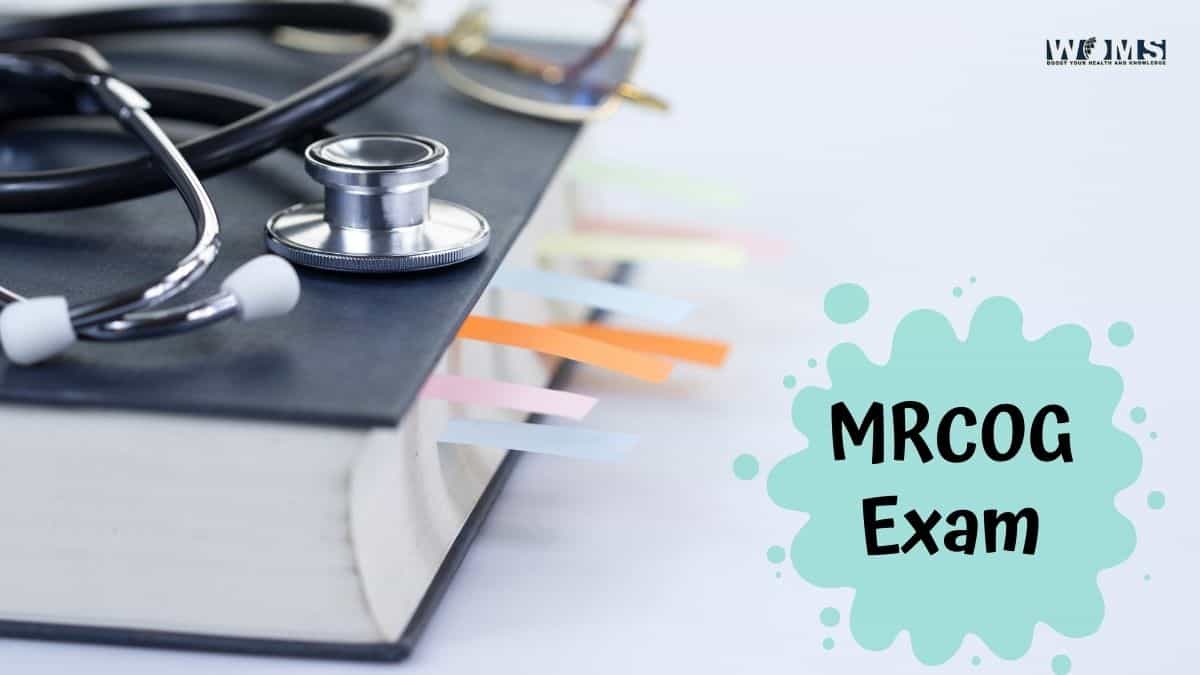MRCOG: All That You Need To Know

Introduction
A WHO report from 2019 estimates that every day in 2017, roughly 810 women died from avoidable factors leading to childbirth and pregnancy. Maternal mortality can be reduced and reproductive and sexual health can be improved by providing women with systematic care during and after childbirth.
Being a member of the Royal College of Obstetricians and Gynecologists (RCOG) can expand the scope of obstetrics and gynecology’s role in women’s health and well-being. Support for women’s health care goes beyond the birth of a child.
MRCOG Full Form
Assuming we’ve learned the facts above, let’s begin our discussion. To begin with, what is the acronym MRCOG known as? MRCOG stands for “Member, Royal College of Obstetricians and Gynecologists.” In other words, we are to treat lightly what the Royal College of Obstetricians and Gynecologists is.
An international organization, the Royal College of Obstetricians and Gynecologists (RCOG) has more than 6,000 members who practice in over 100 countries including India and Pakistan.
The meticulously planned curriculum aids in the acquisition of the best obstetrics and gynecology skills. In the eyes of many, passing the MRCOG exam is the gold standard for career advancement.
An exam was held for the first time in 1931 when the RCOG was founded. In addition to a written exam to assess clinical and basic sciences, the three-part assessment includes an interview. There is a separate clinical skills exam for candidates to demonstrate their ability to implement core clinical skills in this written exam.
Candidates for the MRCOG examination are not only tested on their clinical competencies but also on their in-depth understanding of medical practice.
History
There were no formal medical training programs for midwives prior to the early 20th century. Physicians arrived in the 17th century, but there was no prenatal treatment, no surgical intervention, and obstetrics was limited to the naked process of giving birth. Obstetric forceps were first used by humans in the 17th and 18th centuries.
According to the RCOG website, a medical college was founded in 1518. In 1540, a guild of surgeons was established. Together with the Society of Apothecaries (established in 1617) and the universities, the two bodies assumed responsibility for medical education and the evaluation of physicians’ and surgeons’ competence.
OB/GYN was first recognized as a specialty in the mid-19th century. Since then, there have been numerous professional societies. However, it was realized that a separate college was necessary to give the obstetrics and gynecology field its position in medical practice.
In 1938, the college was given the title of “Royal” by King George VI of the United Kingdom. Having membership in the Royal College of Obstetricians and Gynecologists, whose sole mission is to improve women’s healthcare, is a high honor. It is possible to overcome the difficulties of passing the ever-changing RCOG examination by systematically preparing and being relieved to learn that it will add enormous value to your formal qualifications.
MRCOG: Examination Format
The exam is a three-part assessment:
MRCOG PART 1
It is a written examination that assesses the understanding of basic and medical fields of science relevant to the subject matter. Part 1 of the examination is open to candidates who have earned their medical degrees. As a result, applicants are advised to wait until they have a solid understanding of postgraduate OB/GYN before taking the exam.
There is no guarantee that a candidate’s application to take the part 1 exam will be accepted if they later apply to take part 2. Passing the first exam is required before moving on to the second exam, which can be taken at any time.
The application process is a two-step process that includes determining eligibility and making a reservation. In order to reserve a spot in an exam, you must first submit and have approved your eligibility application.
This section of the exam is a written one. You’ll need to complete two written assignments, each of which contains 100 questions with a single best answer (SBAs). The number of points assigned to each paper is the same for all students. As a result, the overall score is divided into two parts: 50% for paper 1 and 50% for paper 2.
MRCOG PART 2
It is important to note that the format of the Part 2 MRCOG is comparable to that of the PART 1 examination shown above.
MRCOG PART 3
Here, there is an independent clinical skill examination that tests candidates’ ability to apply the core clinical skills defined in the O&G consultants must pass the Part 3 MRCOG in order to be eligible for a consultant position in the UK Specialist Register. MRCOG Part 2 and Part 3 must be passed by specialty trainees before they can progress from ST5 to ST6 in the UK. This section consists of a circuit of 14 tasks.
Candidates are evaluated in five areas:
- Patient safety
- Communication with patients and their relatives.
- Colleagues’ communication
- Information gathering
- Clinical knowledge application
To reflect real-world clinical practice, each of the 14 tasks will evaluate approximately three and four of these domains, such as communicating with patients and applying clinical knowledge, or conversing with colleagues and considering patient safety. An initial two-minute reading period precedes each 12-minute task.
Examining a candidate’s ability to show core clinical skills within the context of skills, knowledge, attitudes, and competencies is the goal of the third and final examination.
In order to become a member, one must pass all 3 components of the Membership exam. The letters MRCOG can be used to identify members. For those outside the United Kingdom who want to take part 2 of the MRCOG, this article is for you.
Is it difficult?
A passing grade on the exam isn’t a guarantee, but it’s not impossible either. Remember that the exam is based on the UK system, so you’ll need to adapt to it. Because they haven’t invited you to take the exam, it’s entirely up to you whether or not you want to do so.
Think prudently even as you go through the regulations to adapt to the UK system, even if it seems impossible at first glance. Talking to someone who has recently passed the exam or is present in the UK is more helpful than someone who has not. When it comes to exams, things are always changing and evolving. In particular, the current Part-3 exam differs greatly from the preceding Part-2 OSCE.
Preparation Plan for MRCOG Degree
Keep in mind that no two pairs of feet are alike. Everybody’s exam preparation time is different. Some take three months; others could require 3 years. Some people may prefer (or have the advantage) to consider taking time off from work, while others may not have the same luck.
Although MRCOG is the ultimate goal in the big scheme of things, it is a necessary one. It doesn’t matter how long it takes you to get there. As a reminder, a large number of you hold a high post-graduate medical degree in your country, and you’re doing fine (though perhaps not “well-established”). This is like a feather in your cap. Try it, you’ll never regret it.
Which benfits can a person earn?
There are numerous advantages to taking this examination. Here are just a few examples:
- It is possible to acquire your MRCOG while continuing to work in your current location and country, as the exam is offered in numerous locations around the world.
- The Royal College of Obstetricians and Gynecologists accepts almost all of the tutorials done in medical centers for municipal fellowship or enrollment exams of Obstetricians and Gynecologists as part of the assessment of training (RCOG). Even professional experience in obstetrics and gynecology prior to taking the MRCOG examination part 1 is acceptable.
- Based on these findings, it is evident that this examination does not require any additional training. In order to pass the local postgraduate exam, one must continue to do all that is required. To keep improving one’s clinical abilities, one must keep practicing one’s clinical skills. One can also use the same coaching to get their MRCOG.
- After completing the MRCOG, one can operate at some high positions in most countries and advance his or her profession. It gives a person worldwide access to a wide range of opportunities. An excellent standard of living is within reach for many people around the world, thanks to generous monetary rewards and other forms of support.
- There are opportunities to mentor new OB/GYNs by providing them with a standard set of instructions.
- A person can put into practice the evidence-based practices that they have learned on their MRCOG journey. This will enhance the effectiveness of treatment for women and make a significant contribution to the growth of his or her nation.
Also read: MBBS full forms, Enrollments Courses, and Eligibility
Conclusion
From the above discussion, it can be gathered that the examination really helps as it helps to bring up the best obstetricians and gynecologists in the world. The examination is never an easy one. It requires rigorous training to accomplish. At the same time, this should not discourage candidates from participating. A person should think of the thousands of members of the Royal College of Obstetricians and Gynecologists (RCOG) in the world; if they can be one then you also can be a member.
By and large, the world needs obstetricians and Gynecologists in order to maintain a steady and healthy birth rate. Think of this also and apply for the MRCOG examination.




